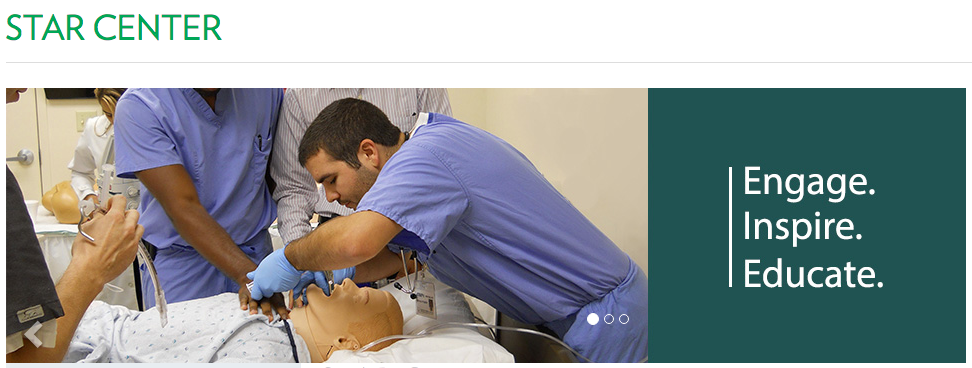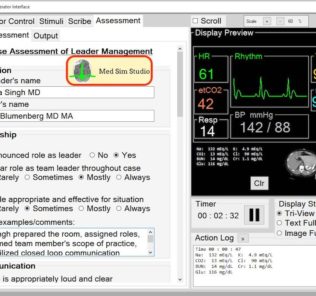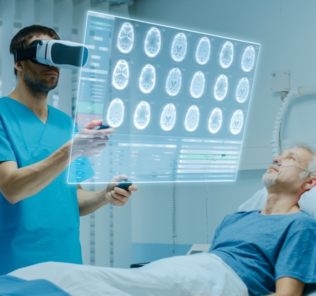On-Boarding the On-Boarders with a Simulation Toolkit from Allegheny Health Network’s STAR Center
The start of a new job or new job responsibilities may be overwhelming and/or anxiety-inducing to some. These feelings may be particularly heightened in the healthcare realm where clinicians move from neat textbook cases to real clinical experiences. Many institutions have identified these feelings among their new nurses and have since included simulation based on-boarding experiences for their new hires to help ease this transition. However ironically, job preparations for the simulation instructors who facilitate these new-hire on-boarding experiences are often overlooked. Today we look at how to “On-Board the On-Boarders” with a Simulation Toolkit from Allegheny Health Network’s STAR Center, thanks to this article submission from their very own Laura Daniel, PhD, Psychometrician.
The roles of simulation facilitators are often fulfilled by experienced clinical providers. So while they typically have a wealth of clinical knowledge, demonstrating procedures one-on-one on the unit is quite different than facilitating a simulation based education course with a group of clinicians, complete with prebriefing and debriefing sessions. Indeed, it cannot be assumed that teaching skills on the unit transfer to the teaching environment of the simulation lab. Therefore, simulation facilitators require specialized training to eliminate or greatly reduce any feelings of anxiety to reach their full simulation based teaching potential. The Simulation, Teaching, and Academic Research (STAR) Center at Allegheny Health Network recognized this facilitator need within its own network and developed a thorough on-boarding program for the simulation course facilitators.
Sponsored Content:
The STAR Center’s on-boarding program for the simulation course facilitators is designed to orient, educate, and evaluate them on the facilitation of simulation courses and the operation of simulation equipment. This multifaceted program is comprised of courses (Introductory, Intermediate, and Advanced); annual competencies; and a simulation success toolkit. The courses and annual competencies teach the simulation course facilitators the knowledge and skills needed to ensure they are adequately prepared to facilitate simulation based courses in the Center. The focus of this article will be on the pioneering Simulation Success Toolkit, which is a nearly 100-page unique guidebook created by the STAR staff to serve as a step-by-step manual for course facilitators’ simulation success.
The Simulation Success Toolkit provides the course facilitators with the essential tools needed to design, plan, and implement simulation into their curricula. It begins with an explanation of the role of simulation course facilitator, detailing the process to become a simulation based education course facilitator within the Center. Interested individuals must complete a pre-simulation survey and submit their curriculum vitae (CV) to the Vice-President of Simulation Education. The pre-simulation survey is a six-item instrument that asks for the individuals’ basic demographic information, their prior experiences with simulation, and their simulation education plans and ideas. This survey is used to customize the simulation training courses as much as possible for each individual. Once approved by the Center, the individual must enroll in the required simulation courses. The Simulation Success Toolkit provides the readers with a detailed outline of what each of the courses entail – their descriptions, learning objectives, and expected outcomes.
The main section of this toolkit is developed as an interactive experience, encouraging the course facilitators to write directly in the guidebook in the designated recording spaces, making notes and/or recording plans. It is divided into six distinct modules to fully prepare the course facilitators. Each module defines the information needed to effectively use simulation as a teaching and learning tool and each has distinct module objectives. Module 1 defines the steps required to thoroughly plan simulation scenarios from pre-course readings to assigning learner roles. After module 1, the course facilitator will have the foundation for his/her learning experience by defining the course content (course description), the course participants (target audience), the key learning topics (learning objectives), the overall goals for the learner (expected outcomes), and how the course content will be taught (content format).
Module 2 highlights the importance of the prebriefing and debriefing processes. Course facilitators are given a prebriefing template to guide their prebriefing session and a prebriefing checklist to administer to their learners to ensure they are ready to participate in the simulation. The toolkit also includes the Promoting Excellence and Reflective Learning in Simulation (PEARLS) tool, which guides facilitators through the five phases of a debriefing session. Course facilitators are encouraged to administer a 17-item debriefing session evaluation tool to their students to gain their perspective on the effectiveness of the session.
Sponsored Content:
Module 3 introduces the new course facilitators to standardized and simulated patients (SPs). The toolkit explains how the SPs are used in junction with the simulators and what value they add to the simulation. The toolkit lists the process steps for facilitators to request standardized/simulated patients from the STAR Center. The toolkit also provides interested facilitators with hyperlinks to the Association of Standardized Patient Educators (ASPE) Standards of Best Practices.
Module 4 discusses the importance of collecting and analyzing outcome data in simulation learning. The STAR Center basic course evaluation tools are embedded into this module for the facilitators’ use. Each course facilitator is also required to administer his/her own evaluation tool that reflects his/her specific course objectives. Course facilitators are encouraged to work with the STAR Center’s psychometrician and her contact information is included in the toolkit.
Module 5 is a thorough step-by-step guide to aid facilitators in developing simulation scenarios. Course facilitators are given a “Scenario Development Worksheet” which is a comprehensive tool where facilitators record their learning objectives, simulators, and details of the simulation. The facilitators must plan the events and actions of the simulation and what special effects they need to increase realism and really make their simulation come to life.
Module 6 contains a comprehensive troubleshooting guide for the most frequently used mannequins. For each simulator, the toolkit provides facilitators with their overview and purpose; initial set-up and power on procedures and checklist; troubleshooting; clean up and tear down; facts and tips; frequently encountered problems; and contact information to obtain more help. Course facilitators are also provided with a CD that contains the same information electronically. Module 6 also provides facilitators with an introduction to the audio/video recording devices and equipment that they may utilize in their course(s).
The Simulation Success Toolkit concludes with an objectives checklist that reviews the ten overall goals of the simulation toolkit, a 19-item glossary, and a list of 29 related simulation article citations. This toolkit is reviewed and updated regularly by the Director of Interprofessional Education and the Vice-President of Simulation Education at the STAR Center to stay current with STAR policies, simulator information, and simulation best practices.
The on-boarding program that the simulation course facilitators undergo at the STAR Center safeguards against feelings of unpreparedness and/or anxiety. By fully preparing the course facilitators in their new roles as simulation based educators, the quality of the Center’s education is likely to increase. The course facilitators have the Center’s full support before, during, and after all educational experiences.
Learn more about On-Boarding the On-Boarders with a Simulation Toolkit!
Today’s article was guest authored by Laura Daniel, PhD, Psychometrician at The Simulation, Teaching, and Academic Research (STAR) Center at Allegheny Health Network.
Have a story to share with the global healthcare simulation community? Submit your simulation news and resources here!
Sponsored Content:

















